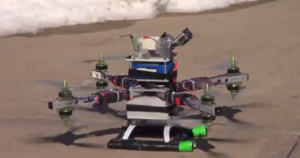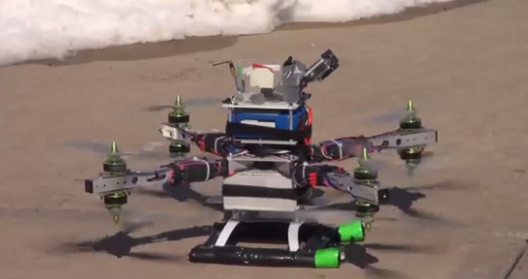Between acting as the principal attorney for the Minnesota Newspaper Association and doubling as an adjunct professor at St. Thomas, Mark Anfinson has a lot on his plate. Recently, a new topic has taken over his work: Minnesota’s drone laws.
Drones – unmanned aerial vehicles – have sparked much debate over their advantages and disadvantages, particularly regarding news gathering. Conversation about their use has increased, according to Anfinson.

“I don’t recall much discussion about the drones a year ago in the legislative session,” Anfinson said. “I think if you look at the general media reports, it’s really become more of an issue in the last few months. It appears that the technology has sort of jumped ahead.”
Anfinson was due to present his thoughts on drones in Minnesota to a legislative committee, so he turned to his students for some input. Senior Josh Stephens, a student in Anfinson’s media law class last semester, said the conversation was very lively.
“We actually came to class one day, and he brought it up,” Stephens said. “We were at a point in the semester where we were talking a lot about privacy law, and he was going to talk about drones in court a few weeks later, so he wanted to get our input.”
Anfinson said the class discussion was helpful in determining his own thoughts about the discussion.
“It was a fascinating discussion. The capacity of drones to collect data is something that’s really kind of unprecedented,” Anfinson said. “So I figured a bunch of students, young students, who are curious and involved in media communication, might have some good contributions to make about where lines should be drawn. It was very helpful for my own thinking about the subject.”
Drones have gained popularity in recent years as a means to get video from new vantage points and situations.
“A lot of news organizations are looking seriously at using drones for news purposes in situations where it would be impossible or dangerous to use a helicopter or other more traditional means of video,” Anfinson said. “Getting cameras close to the scene of a big fire for example.”
Stephens said that although there are many potential uses for drones in the future, he doesn’t see changes happening for a long time.
“I think drones are really intriguing,” Stephens said. “But there’s so much risk of misuse without very strict regulations passed, and I don’t see that happening anytime soon because there are so many unanswered questions surrounding drones.”
Although Anfinson agreed it will take time, he is more optimistic about the benefits.
“It’s still really early in the process, and most people who are going to be making the decisions about this still are climbing the learning curve pretty steeply,” Anfinson said. “It’s quite remarkable how fast technology has evolved with these drones.”
Amidst all the uncertainty, Stephens said Anfinson’s enthusiasm about the subject is always apparent.
“I think it’s awesome,” Stephens said. “It’s cool to see and hear about (Anfinson’s) involvement in real cases and just see his knowledge being put into real situations.”
Andrew Frentz can be reached at fren2218@stthomas.edu.



